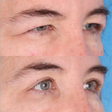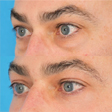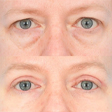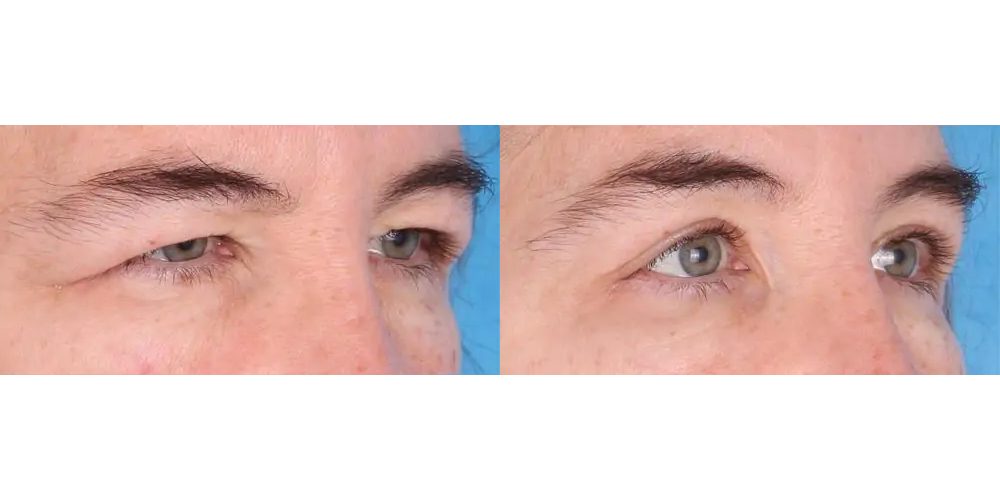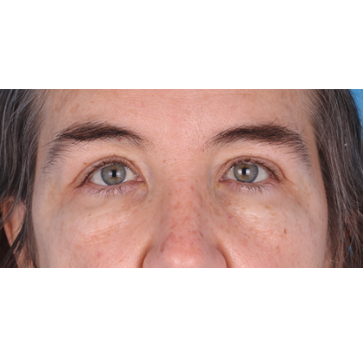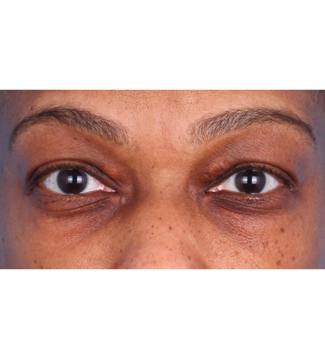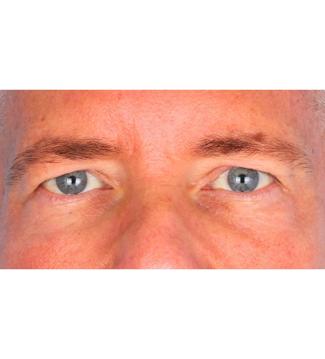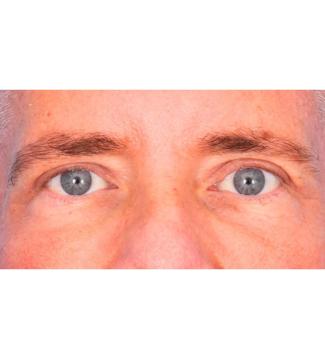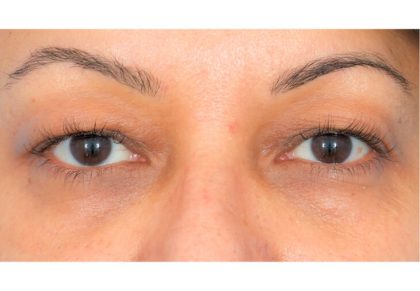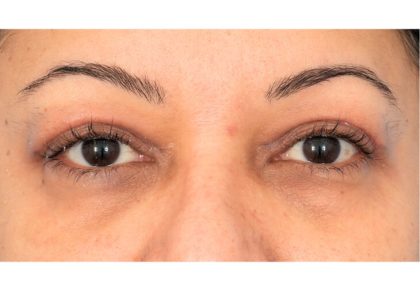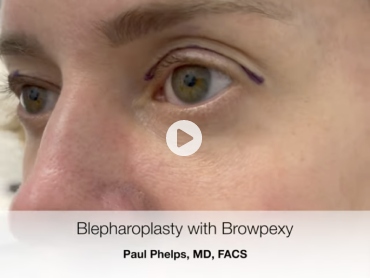Upper Blepharoplasty
Conveniently located to serve the areas of Chicago, IL
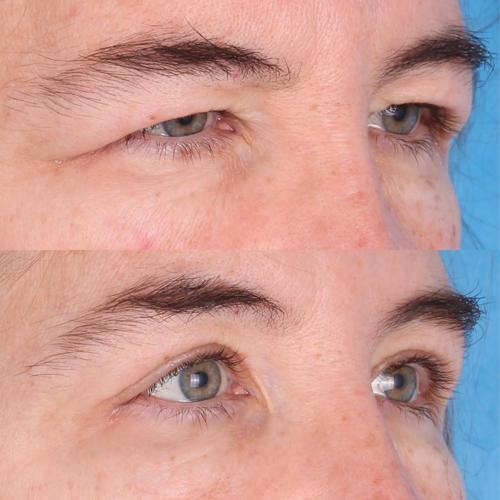
An upper blepharoplasty, or upper eyelid surgery, is designed to improve the shape and contours of the upper eyelids. Sagging eyelids and fine lines around the eyes can make a person look tired, unhealthy, frail, and older. (1) Utilizing minimally invasive CO2 laser technology, upper eyelid surgery can help you look more alert and youthful and may even resolve any unwanted heaviness you feel around your eyes. Many patients comment that they look refreshed and get positive feedback from friends and family after this procedure, boosting their self-confidence.
As an American Society of Ophthalmic Plastic & Reconstructive Surgery (ASOPRS) board-certified surgeon, Dr. Paul Phelps is a super sub-specialist in complex reconstructive surgery of the eyelids and face. Because of his advanced training and international reputation as a master of blepharoplasty surgery, he serves as a board examiner for this prestigious group.
If you are searching for the highest quality outcomes for your eyelid surgery, consider contacting Chicago Oculofacial Plastic Surgery at (312) 888 5754 to book your consultation, or inquire using our online form.
Why Choose Eyelid Surgery?
There are several reasons why someone might choose to undergo a blepharoplasty procedure:
- To improve the appearance of the eyes: Blepharoplasty can improve the appearance of the eyelids and include the removal of excess skin or fat deposits. Unwanted tissue above the eyes can make them look overly “hooded”. Eye puffiness under the eyes can occur due to the enlargement of the orbital fat pad alongside the breakdown of collagen. (2) Most patients want an upper blepharoplasty for subtly more open, expressive eyes. Patients can opt for either an upper or lower eyelid surgery- or a combination of both known as a quad blepharoplasty – depending on their cosmetic needs. Many women find that eyelid surgery allows for easier makeup application and flatters the natural shape and color of their eyes.
- To correct asymmetry: Some people may have asymmetrical eyelids, where one eyelid droops more than the other. Although upper blepharoplasty can help to correct this and improve the overall symmetry of the face, absolute perfect symmetry is impossible to achieve.
- To correct vision problems: In some cases, excess skin or fat on the eyelids can obstruct vision, making it difficult to see; upper blepharoplasty can correct this problem and improve vision. Please check your insurance plan to see if they cover eyelid surgery. Most policies will require photos and visual field testing that demonstrate significant vision loss with the eyelid blocking some of the pupil before covering the cost of eyelid surgery.
It is important to note that like any surgery, there are risks and potential complications associated with blepharoplasty, and it should be done only after careful consideration and consultation with a qualified and experienced oculofacial plastic surgeon like Dr. Phelps.
Candidates for Upper Eyelid Surgery
The ideal candidate for upper blepharoplasty is someone who has drooping or sagging eyelids that make them look tired or aged, or affect their vision. Patients considering this surgery should be in good overall health without any medical conditions that could interfere with their recovery. For example, patients with diabetes, glaucoma, chronic high blood pressure, and conditions related to circulatory health may not qualify for the procedure.
Dr. Phelps will evaluate your situation and determine if a blepharoplasty is safe and right for you. Most often, he performs these procedures on patients over 35, since this is about the age when the skin’s collagen and elastin fibers begin to degrade, causing the skin to sag and lose its elasticity. (3) In some cases, blepharoplasty may be recommended for younger patients who have genetic or structural issues with their eyelids. Finally, patients should be non-smokers, but Dr. Phelps will consider those who are willing to quit temporarily so that their healing isn’t compromised.
Personal Consultation
During your consultation with Dr. Phelps, he will thoroughly assess your cosmetic concerns and review your medical history to see if eyelid surgery is suitable for you. As an experienced oculofacial plastic surgeon, he can provide you with extensive information regarding the procedure and the best recovery steps to promote a speedy and comfortable recovery. During this first meeting, you will also have the opportunity to ask questions and consider supplementary treatments such as a browpexy.
Dr. Phelps prides himself in establishing a trusting relationship with every patient so that they can make an informed decision about their treatment. To get started today, you can reach his Chicago office at (312) 888 5754 or you can request your consultation via his contact page. A member of his staff will get in touch with you as soon as possible.
How to Prepare
Dr. Phelps may ask you to discontinue blood thinners for approximately 2 weeks to reduce your risk of excess bleeding or bruising. If you smoke regularly, you should quit for a few weeks before and a few weeks after your procedure. During this time, you should stock up on over-the-counter medications that have been approved by Dr. Phelps. He will also inform you of certain cosmetic treatments to avoid during your preparation. Finally, you should make a plan for someone to pick you up after your surgery.
Blepharoplasty Procedure Steps
During your surgery, we will make sure that you are completely comfortable and pain-free. Dr. Phelps will discuss the options including local anesthesia combined with either an oral anti-anxiety medication (light sedation), twilight anesthesia (moderate sedation), or general anesthesia (deep sedation). At Chicago Oculofacial Plastic Surgery, we perform the large majority of these procedures in our own very own AAAHC accredited facility. For patients with special needs, we may recommend surgery at our affiliated facility at Northwestern Memorial Hospital. After you are properly anesthetized, here is how the surgery will follow:
- Marking: Dr. Phelps will carefully measure and mark your eyelid. These markings are a guide as to how much tissue will be removed and where fat pads may be transposed to improve aesthetic appearance.
- Sterilization of the surgical site: He will clean the surgical area to reduce the risk of infection.
- Incisions: Dr. Phelps will make the incision in the crease of the eyelid to minimize scarring. He will use the Lumenis Ultrapulse, a CO2 laser, to make these precise incisions. This innovative method of performing blepharoplasty reduces procedure time, minimizes blood loss, and reduces post-operative bruising- all factors that contribute to the quality of the final results. (4)
- Tissue removal and repositioning: Dr. Phelps will remove lax skin and small deposits of bulging fat from the eyelids as needed. He may tighten the muscle immediately surrounding each eye, the orbicularis oculi. He may also reposition tissue to improve the overall appearance of the eyes.
- Closure: He will close the incisions with dissolvable sutures, which will typically disintegrate and fall out around one week after surgery. If some sutures remain, he can help remove them for you during a postoperative visit.
The entire procedure typically takes 1 to 2 hours, and the patient may stay in the office or surgical center for an hour or so after surgery to ensure proper recovery from anesthesia. During the surgery, we may treat you with medications such as tranexamic acid or dexamethasone to expedite surgical recovery time. (5)
Risks and Complications of Blepharoplasty
As with any surgery, blepharoplasty carries potential risks, such as bleeding, infection, poor healing (scarring), and a rare risk of vision loss. It is important to discuss these with Dr. Phelps and to carefully follow all preparation and post-operative instructions to minimize your risk of developing a complication.
Recovery and Results
After surgery, patients find that applying cold compresses to the area can help alleviate discomfort and reduce swelling. We recommend keeping the area cool for 20 minutes on and 20 minutes off for the first 72 hours after surgery. An alternative to cool compresses are lid lift goggles. These goggles place mild pressure with cooling foam on the eyelids which helps reduce bruising and swelling. You can purchase them at our office or online. These goggles may be especially helpful for patients who are side sleepers or tend to toss and turn at night. We also recommend over-the-counter acetaminophen (Tylenol) or ibuprofen (Advil) to combat any discomfort. Patients are advised to keep their head above their heart (no bending, heavy lifting, or strenuous activity) for one week after surgery. (6)
Within a week, you will likely feel well enough to go back to work. Within 2 weeks, residual bruising or swelling will subside, and you will be able to safely return to more physically strenuous activities. If you have major events such as a wedding or graduation, we recommend planning surgery at least six weeks prior. Full healing and maturation of scar tissue may take up to one year.
Corresponding & Complementary Procedures
Dr. Phelps frequently performs blepharoplasty with the following operations:
- Ptosis Surgery
- Laser Resurfacing
- Eyelid Tightening
- Fat Grafting
- Fat Transposition
- Browpexy
- Brow Lift
- Mid-Face Lift
- Facelift and Neck Lift
Cost of Upper Eyelid Surgery in Chicago
The exact cost of an upper blepharoplasty depends on the techniques used and the extent of correction required. At the time of the consultation appointment, Dr. Phelps will seek to understand your goals and come up with a surgical plan specific to your needs. Most of our rejuvenating eyelid surgeries range in cost between $4,500 and $9,500.
Eyelid Lift Treatment Cost from $4,500
*prices are a guide, total cost will be determined based on evaluation of your specific eyelid condition
AppointmentGet in touch with Chicago Oculofacial Plastic Surgery and schedule your personal consultation by calling (312) 888-5754 or by filling out our convenient online form.
FAQ
Is upper eyelid surgery covered by insurance?
Getting upper eyelid surgery covered by insurance requires extensive documentation and proof of true vision impairment. If blepharoplasty is performed with other surgeries, the other surgeries are generally not covered.
Can upper blepharoplasty be performed for purely cosmetic reasons?
Yes, upper blepharoplasty is commonly performed for cosmetic purposes, allowing individuals to enhance their natural beauty and regain confidence in their appearance. However, it can also be done for functional reasons if the sagging eyelids affect one’s vision.
What causes sagging upper eyelids?
Sagging or droopy upper eyelids can occur due to various factors, including the natural aging process, genetics, sun damage, and lifestyle choices. Over time, the skin loses its elasticity, and the underlying muscles weaken, leading to the accumulation of excess skin and fat on the upper eyelids.
Can upper blepharoplasty be combined with other procedures?
Yes, upper blepharoplasty can be combined with other facial rejuvenation procedures to achieve more comprehensive results. Commonly combined procedures include lower blepharoplasty (for addressing under-eye bags), brow lift (to elevate the eyebrows and smooth forehead wrinkles), and facelift (for overall facial rejuvenation).
References
- Bater KL, Ishii LE, Papel ID, et al. Association Between Facial Rejuvenation and Observer Ratings of Youth, Attractiveness, Success, and Health. JAMA Facial Plastic Surgery. 2017;19(5):360. doi:https://doi.org/10.1001/jamafacial.2017.0126
- Goodman D, Ness S. The Role of Oxidative Stress in the Aging Eye. Life. 2023;13(3):837. doi:https://doi.org/10.3390/life13030837
- Rousseaux I, Robson S. Body Contouring and Skin Tightening Using a Unique Novel Multisource Radiofrequency Energy Delivery Method. The Journal of Clinical and Aesthetic Dermatology. 2017;10(4):24-29. https://www.ncbi.nlm.nih.gov/pmc/articles/PMC5404777/
- Bonan P, Fusco I, Bruscino N, et al. Laser-assisted blepharoplasty: An innovative safe and effective technique. Skin research and technology: official journal of International Society for Bioengineering and the Skin (ISBS) [and] International Society for Digital Imaging of Skin (ISDIS) [and] International Society for Skin Imaging (ISSI). 2023;29(5):e13351. doi:https://doi.org/10.1111/srt.13351
- Elizabeth Laikhter, Carly D Comer, Eric Shiah, Samuel M Manstein, Paul A Bain, Samuel J Lin, A Systematic Review and Meta-Analysis Evaluating the Impact of Tranexamic Acid Administration in Aesthetic Plastic Surgery, Aesthetic Surgery Journal, Volume 42, Issue 5, May 2022, Pages 548–558, https://doi.org/10.1093/asj/sjab333
- Khanna S, Phelps PO. The basics of baggy eyelids. Disease-a-Month. Published online July 2020:101037. doi:https://doi.org/10.1016/j.disamonth.2020.101037
